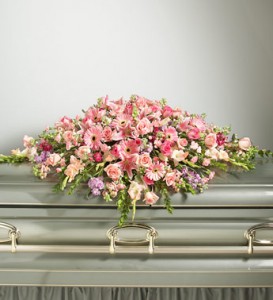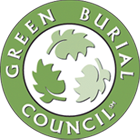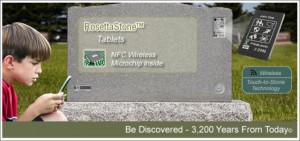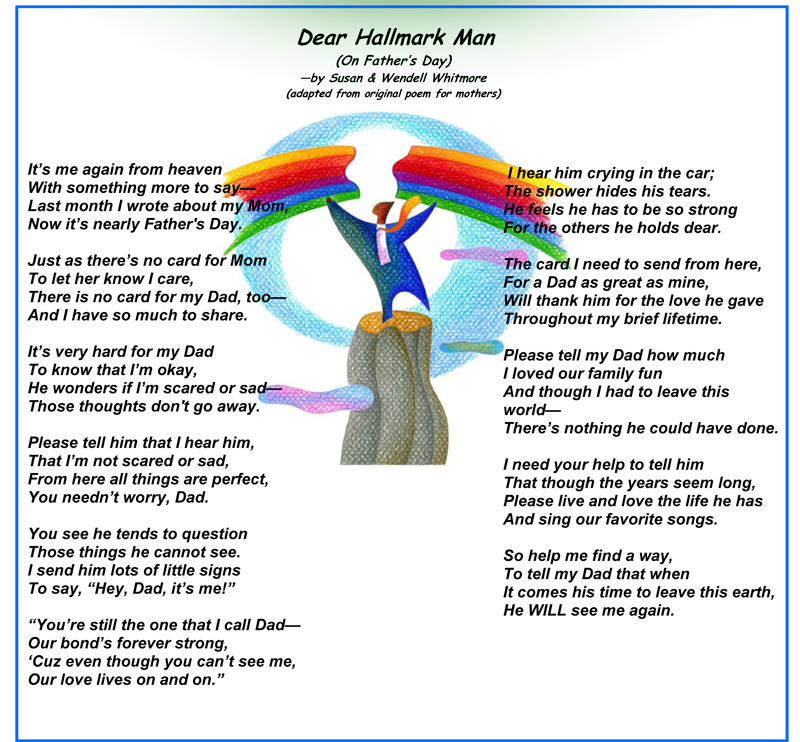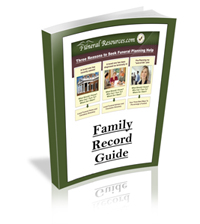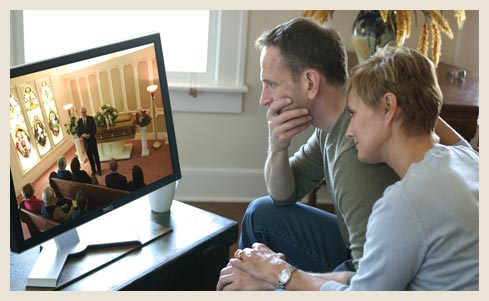Funeral Blog to Plan a Funeral, End of Life, Grief and Loss, Funeral Home Services, Funeral Printing, Memorial Technology, Funeral Directory, Funeral Help, Funeral Guides, and more
Preplan Funeral Expenses
Pre Need
Preplanning for Funeral Costs and Expenses
The final expense cost of regular adult funeral including basic items, can be significant. To give you a quick overview of the funeral costs, we’ve developed a quick chart. Keep in mind, these basic items do not include cemetery costs, cemetery monuments, or grave marker costs – nor any other miscellaneous charges such as for funeral flowers or obituaries.
$1,595 Non-declinable basic services fee
$ 233 Removal/transfer of remains to funeral home
$ 550 Embalming
$ 203 Other preparation of the body
$ 406 Use of facilities/staff for viewing
$ 463 Use of facilities/staff for funeral ceremony
$ 251 Use of a hearse
$ 120 Use of a service car/van
$ 119 Basic memorial printed package
$2,255 Metal Casket
$1,128 Vault
Total Cost $7,323
For more information about specific Final Expense Costs or strategies to Prepay Funeral Expenses and End of Life Planning, you’ll find a wealth of information throughout our website, FuneralResources.com.
Facts About Green Burials Versus Traditional Funeral Burials
Green Funeral
The Key Differences Between
Traditional and Green Burials
Commonly known as green burials, eco-friendly burials, natural burials, or woodland burials, there are distinct differences between a traditional burial and a green burial.
The first major difference is that most traditional funeral costs average approximately $10,000, while green burials are approximately $2500.
Green burials do not employ the use of embalming fluids, pesticides, herbicides, or irrigation.
Bamboo, wicker, cardboard or wooden caskets are used instead of metal caskets.
Concrete burial vaults are not used for a green burial.
The graves are usually hand-dug and are shallower than with those used in traditional burials.
Graves are marked with more natural landmarks that blend in with the area such as plants, rocks, trees or flowers. Elaborate and prominent headstones or grave markers are not used in a green burial.
Click to Learn More About a Green Funeral
Green Burial Markers
Green Burial and Funeral
Choose Green with a
Green Burial Marker
Consider a greener burial marker for your green funeral. Instead of large, elaborate grave markers, green burials feature unobtrusive, natural markers. These often involve trees, funeral flowers, and rocks found on or around the gravesite. While some families opt for a small flat stone identifying the burial location, more common in a green cemetery are the use of GPS coordinates. Though this modern global positioning method, the family of the deceased can find the exact burial plot for their loved one by mapping out the individual global position given to them by the cemetery manager.
Learn More About a Green Funeral
Learn More About Green Burials
Learn More About New Gravestone Technology
Green Funeral and Green Burial Options
Green Funeral
A Green Funeral Can Help Save the Environment
Opponents to the traditional funeral homes view them as being more wasteful than green funeral providers citing the use of toxic chemicals such as formaldehyde in embalming fluid as unnecessary and damaging to the environment. To plan a funeral traditionally, this consumes enormous amounts of materials such as steel, concrete, copper, and bronze. The figures are in the tens of thousands of tons annually. During a burial, these elements remain in the ground indefinitely, polluting the earth.
Each year, cemeteries across the US bury approximately:
– 30 million board feet (70,000 m³) of hardwoods (caskets)
– 90,272 tons of steel (caskets)
– 14,000 tons of steel (vaults)
– 2,700 tons of copper and bronze (caskets)
– 1,636,000 tons of reinforced concrete (vaults)
– 827,060 US gallons (3,130 m³) of embalming fluid
*(Compiled from statistics by Casket and Funeral Association of America, Cremation Association of North America, Doric Inc., The Rainforest Action Network, and Mary Woodsen, Pre-Posthumous Society)
Learn More About Green Burials
Learn More About a Green Funeral
New Funeral and Memorial Technology for Fathers
Grief and Loss
New Memorial Tributes and Funeral Technology Options for Fathers
For those special Dad’s and Grandfathers who have passed and are dearly missed, creating a personalized and specialized memorial can provide an excellent opportunity to heal and remember.
Below is a list of some of the most popular memorial options that many families are choosing for a personalized and special memorial, tribute, keepsake, or family heirloom:
About New Funeral and Memorial Technology:
“Technology is changing the face of the funeral industry and baby boomers, those ages 43 to 62 are at the root of it“, says John Reed, president of the National Funeral Directors Association based in Brookfield, Wis.
Today many new and innovative technologies are widely recognized in the funeral industry as common services that help make a difficult situation a little easier. Boomers are memorializing their parents and loved ones in nontraditional ways and using new funeral technology to do it.
Technology is opening the doors to unique memorial ideas and expanding funeral planning and memorial service options. With these tech-savvy Baby Boomers wanting to take the negativity out of funerals and find ways to celebrate a person’s life, using new funeral technology such as some of these listed below are among the most popular, common, and rapidly growing.
Top 5 New Memorials Options for Fathers:
New Funeral Technology Offers Many Benefits:
Keep in mind that these gifts can serve as an excellent family tribute, keepsake, or family heirloom. The main benefit from these gifts is that, although in different way, each of them offers a wonderful opportunity to honor and celebrate your Dad, as well as share many of the great stories and memories you shared together.
Christopher P. Hill
FuneralResources.com
Funeral and Memorial Technology News
Funeral and Memorial Technology

A Few Words Before I Go
The original Rosetta Stone helped translate the pictorial language of the ancient Egyptians, providing definitions of the imagery and bringing to life a long-gone culture. Now one company is offering personal versions of the stones to tell stories about an individual long after we’re gone.
Objecs LLC’s RosettaStone is an oblong — think full-sized iPod – piece of granite or travertine stone inscribed with pictorial images that stand for different aspects of an individual’s life. Seemlessly incorporated into tombstones and monuments, the stones invite cemetery visitors to plug into a website – or in some cases simply wave your phone in front of the stone – and see the meaning of each symbol.
“Walk around a cemetery today and gravestones doesn’t tell you anything. Date of birth. Date of death. They’re cold and impersonal,” said Chris Hill, a financial advisor in northern Virginia and also Founder of FuneralResources.com, who personally owns two RosettaStones. “This will tell my story for thousands of years.”
Purchasers can choose up to six tablet symbols, reminiscent of hieroglyphics, from more than 300 options, including a striped pole for a barber, a caliper for an engineer, and a man behind bars for ne’er-do-wells who want to be remembered as such.
When selecting the symbols for his stone, Hill thought of his wife and two children, his passions for music and writing, his belief that life doesn’t end with death.
For his six symbols, he chose an “I” for general information, a U.S. map, stick figures representing a family, a music note, a hand holding a pen, and a telescope looking into space.
“It’s just as important to document your life as it is to remember it”, Hill said.
John Bottorff, founder of Objecs LLC, said the tablet symbols spur interest and conversation.
“When I see someone using a symbol I can relate to, I can’t help but be curious as to their life experience around it. We are seeing mini-meaning of life stuff here from common people, not a Dalai Lama,” Bottorff said. “I will never look at a barber pole symbol the same – I’m still awestruck at how a barber has learned the deepest values of life from his profession. Not all of the messages are positive, but I think they are all gifts to future generations from today’s cooks, barbers, lawyers, fishermen and all kinds of people and professions.”
But it’s the memorial technology element that makes the RosettaStone special, Bottorff said. If the cell phone is NFC-enabled — something still rare in North America but common overseas – simply touching the phone to the tablet allows direct access to the story behind each symbol. The internal microchip uses the phone’s own magnetic field to work and transfer the data, then returns to a dormant state.
For a regular cell phone with Internet access, users can type in the web information on the tablet and have the same information appear. Each symbol can be accompanied by about 200 words of text.
So how is this better than including a memorial website’s address on a tombstone? The answer is permanence, Bottorff said.
“Compare us to them and we look a bit primitive, he said. “The traditional memorial website is a much richer multimedia experience, but not necessarily pursuing the long-term data survival model we are. If you’re interested in a long genealogical surviving record, ours is a pretty good approach.”
RosettaStone boasts that the tablets’ information will remain accessible for the next 3,000 years. Even if the company folds, the tablets’ associated information will remain. In part, that’s because information is both hard-coded to the stones’ internal microchip and archived externally on the web. (Of course, without a time machine, it’s impossible to verify the 3,000-year claim, but the concept seems to sell nonetheless.)
Introduced a little over a month ago, Objecs has sold fewer than 100 of the products, which cost about $200. Among the buyers, Bottorff said, are a well-known American musician and a BBC Television personality.
Although Objecs initially offer for the product was a way to honor the dead, the living have quickly wanted it for themselves too. (In fact, the living are the product’s primarily buyers thus far.) On its website, Objecs notes that RosettaStones are also intended for “mature adults who have reached a stage in life with identifiable milestones and associations. Such milestones may include a profession, discipline, paternal capacity, love of music or skill….”
“When people started buying it for themselves, it was an awakening that it was something people wanted to hold onto as a family heirloom, so we adjusted our message,” Bottorff said.
Hill has been updating and frequently rewriting the text he wants to accompany his RosettaStone entries frequently.
“If a truck hits me tomorrow, I’ve got some words that will last forever and that’s real,” he said. “It’s hard to write at first. You’re thinking, ‘Wow. These are my last words.’”
Remembering Fathers
Grief and Loss
For Those Who Have Lost Their Father
Finding ways to remember the happy times and keeping a father’s memory alive, even long after he has passed, can be challenging but rewarding. This is especially true for younger generations. Telling funny stories or sharing memories about Grandpa or Great Granddad will help future generations to feel connected to their roots and get a true sense of the importance of family.
Given the advent of the Internet and new technology, we strongly suggest you learn more about today’s new memorial technology tools to help remember a loved one. These new tools can also assist with the grief and loss process.
On special days such as birthdays and Father’s Day, we hope those who have lost their father may find comfort in this beautiful poem from our Preferred Provider, Grief Haven.
Coping with Fathers Death
Coping with Loss
How to Cope with the Loss of a Father
My three boys, who are four, six and ten, lost their father last year. Since he has passed away, we have been working our way through the holidays. How do I help them cope with Fathers Day?
A child can celebrate Father’s Day even though they have lost their father. When a person dies it does not mean all the love they have given to people just disappears. A father leaves a lasting imprint on the children he leaves behind. Helping the children remember this love will be important to them as they grow older. One of the most common things people in western society tend to do is act like a person never lived once they have died. Remembering Father’s Day will help keep a fathers memory stay alive.
Here are some things to help kids who are coping with grief and loss to celebrate Father’s Day, even after he has passed away:
Share a Memory: Since the age of the boys are spread out from four years old to 10 years old the way they communicate will differ. However they all can share their story of their father. The other boy can write down a memory from his father that made him feel loved. The six and four year can drawn a picture of a time they shared with their father that made them feel happy and loved. These pictures can be shared with their father and family on Father’s Day.
Make a Card: The boys can all make a card for their father. The card can be filled with how they are feeling with the loss of their mom. Once the cards are completed they can be put out at her graveside or sent up in a balloon if he was cremated.
Plant a Flower: Planting funeral flowers in memory can help the boys watch their love grow. Help them pick out a flower that means something to them and plant it in a cup. When the weather warms up they can plant their flowers outside and talk about the memories of their father. In the fall they can dry the flower(s) and hang them up in their room as a lasting memory through the winter.
Create a Memory Book: Adults in the boys’ life can help them start a memory book. The book would last until they are adults. Every year on Father’s Day the boys can add something to their book about their previous year. These events they would add would be the ones they felt they would want to share with their dad if he were here. For example a good report card, awards from sports, and other achievements that they were proud about.
The important thing to remember is to keep talking to the children about their father. Tell them stories about her that you remember. Ask other adults to share their stories as well. Maybe have the adults write the stories down and add it to the memory book if one is created. Then when the boys are older or they are missing their dad they can always go read the book.
Are you looking for others with whom you can relate? Visit the Beyond Indigo forums to connect with others who are on their grief journeys.
© 2010 Kelasan, Inc.
How to Create an Solid End of Life Plan
End of Life Planning
Your Family-Focused Gift of Love
Like so many families, when we suffered the loss of my mother last year we faced the difficult decision of what to do next. Because we were never willing to accept this as a possible outcome, nor did we think about planning in advance for this incomprehensible loss, we had no idea where to begin or who we could turn to.
Most people tend to overlook one of the greatest gifts you will give your family, which is properly preparing them for the inevitable. At best, you might have started your estate planning process by creating and choosing a Last Will or Living Trust.
However, the harsh reality is that approximately over 70% of Americans have no form of estate plan. So by having a will or Trust, you have clearly taken a step in the right direction toward preplanning your future financial wishes. The problem is, this form of planning fails to accomplish the most important task, which is addressing your family’s immediate concerns.
The person, or in most cases people, responsible for taking care of your final arrangements are usually forced to make extremely important decisions, as well as major financial purchases, within a small time frame…usually within approximately 48 hours after your death. Of course, you cannot expect to fully alleviate the emotional and financial stresses of your loved ones during such a difficult time, but you can help them tremendously by having a plan that outlines your funeral wishes.
Most financial professionals are realizing that an integral part of a sound financial and estate plan is taking care of your funeral services ahead of time. To preplan a funeral gives you the ability to choose your method of disposition, the exact type of services you want, and allows your family to focus more on things such as grieving and recovery. In addition, preplanning is also a good thing for you because it allows you to make extremely important decisions through a calm and clear thought process. Emotionally, it is much more likely that you will create a more rational and logical end of life plan.
When preplanning your funeral, here are several general guidelines to begin your preplanning process:
* Visit various funeral homes and interview multiple funeral directors
* Choose a funeral home and director where you think your family would be most comfortable
* Consider bringing family members with you during this selection process
* Be aware and informed of bereavement entitlements such as veterans, unions, fraternities, etc.
* Consider religious and moral convictions, and discuss them with your family
* Determine your method of disposition (burial, cemetery, entombment, cremation, etc.)
* Plan your ceremony considering things like casket viewing, religious aspects, who should be included, etc.
* Itemize your costs
* The Federal Trade Commission offers a free funeral planning guide titled “Caskets and Burial Vaults” (202-326-2222) which has made it easier for consumers to comparison shop.
* The FTC Funeral Rule requires funeral directors to give pricing information over the phone, as well as provide you with a readily available General Price List if you visit them in person. This FTC Funeral Rule also allows you to purchase caskets, which are the single largest funeral expense, from outside vendors without the threat of a carrying charge.
What About Paying For Funeral Expenses In Advance?
Although planning your funeral arrangements in advance may help alleviate many of the details, prepaying (also known as prearranging or a Pre Need Plan) for your funeral services is a way of taking care of the actual expenses.
Prepaying your funeral or cremation is one of the fastest growing, and most appreciated and accepted aspects of funeral planning. Similar to preplanning your funeral, paying your funeral expenses in advance is also becoming widely accepted by many financial professionals as a solid piece of a sound financial and estate plan.
When prepaying your funeral plan, the most common and widely used strategies are savings and life insurance, mainly because they tend to be deemed the most reliable and readily available. However, there are several other strategies to consider when prepaying your funeral costs or expenses:
Savings
Although many people choose to set aside savings to pay for funeral expenses, there are several reasons this does not always end up working out as originally planned. First, the savings can be depleted based on unexpected financial circumstances, such as health or financial issues. Second, these funds are not always readily available and liquid upon death due to the challenges and restrictions often found in estate planning. Third, the funds set aside can often be insufficient due to inflation and the rising cost of funeral expenses. Finally, it should be noted that savings are included in a part of one’s estate, and, thus, the taxable consequences can often come into play.
Life Insurance
Term Life Insurance is widely considered to be a flexible, simple, and affordable way to pay for your final funeral expenses. Although Term Life Insurance has a set term, or set number of years, it also has multiple uses in prepaying for your funeral. Because upon your death it becomes a liquid asset that is usually not part of your estate, it can be used for many things such as funeral, burial, cremation, liquidity, and many other things, including debts or obligations.
In addition, there are some types of life insurance that allow the funds contributed to these policies (either in lump sum, monthly, quarterly, semi-annually, or annually) to grow and accumulate as a cash value that can be accessed if necessary. Therefore, these policies can not only be used for funeral expenses, but also for other financial planning options that may arise such as financial emergencies, college, etc.
Funeral Insurance
Funeral insurance is an insurance policy which is specifically designed to cover any costs or expenses which are directly related to your funeral. If you purchase one of these policies, one of the options you have is to determine exactly which funeral costs or expenses are to be covered, such as flowers, burial plot, grave marker, and much more.
Another option you have is for the policy to be paid out in a single lump-sum, which can be used to cover your pre-determined costs or expenses, or simply help your loved ones financially as they plan for you. There are many insurance companies that offer funeral insurance packages, and certain funeral homes or funeral companies also offer policies.
Pre-Need Trust Agreements
Another alternative to prepaying your funeral is to consider a Pre-Need Trust Agreement to pay for your costs or expenses. Generally speaking, these Trust accounts are typically funded with monthly payments that are invested in a fund which is designed to grow over time. Although a Trust account is designed to provide the potential for protection against inflation, it is not guaranteed to do so.
Take the First Step Today
In summary, although nobody likes to think or talk about dying, it is one of the facts of life we all must eventually face. If you are trying to build a successful financial plan, the only way you can be sure your plan works smoothly and efficiently is to be proactive about your planning process. This is particularly true and necessary when creating a proper plan of succession, which I firmly believe should include an end-of-life plan.
Christopher P. Hill, Founder
Death, Grief and Loss
Coping with Grief
The Simplicity of Blessings
Death can make us aware of the importance of life. When a person is a funeral director, he or she is surrounded by death. Many believe that blessings can arise out of grief and loss. As a society, we most often focus on the negative aspects of death. At FuneralResources.com, we choose to focus on the positive aspects of death. Here are some things I have learned that might help you and your families:
Everyday Life: Grief often brings into focus our daily life that we assume will “always” be the same. What we might take for granted now can come into full bloom when contrasted with death. Our families, our loved ones and our health start taking on far more importance and they are treasured far more. Material concerns have a chance during a loss to take a second seat. We get back to basics and realize what we have is good. What a blessing.
Hidden Angels: People can be a blessing. As we walk through the five stages of grief, people come into our lives to help ease our pain. A member of Beyond Indigo wrote:
“One of the things I remember most about my horrible summer in hell were three people I met who were walking angels. Each of them, in their own way, made that summer bearable and is remembered now, after it has passed, as huge blessings. I’m actually glad I met them even though I met them only because of the situation, which was causing such grief.”
Look On The Bright Side: Things could be worse. As trite as it sounds, it is true. Life can always be worse. Looking at what occurred as a positive can bring new thoughts to the surface.
Another Beyond Indigo member wrote to us about her pregnancy. She was 21 weeks pregnant when her doctors told her that the baby would not survive the cyst that had become part of its little body. She wrote, “Obviously, the RIGHT ending would have been for me to have a good, wonderful pregnancy that ended with a healthy baby. Wasn’t going to happen. Options like having a kid with horrible life-affecting illnesses and handicaps, or having a stillbirth, or worst – not knowing and having to make a choice. I ended up knowing what I had to do. I was able to end the pregnancy without wondering if I was making the right choice. That was a huge blessing.”
Opportunities: Death is permanent. Once a death occurs, it is hard to say,” I am sorry”, or, “I love you”. It reminds us that we have the opportunity to tell others that we love them or that we are sorry or how important they are in our lives. Take this blessing of time to let others in your life know how important they are to you. Do it now, and don’t wait.
Search: Search out others that have recently lost a loved one or acquaintance. Share your story, you thoughts, your feelings and your concerns and insights with them. Sharing, or volunteering to help someone else feel better will help you both.
Celebrate: Celebrate any occasion, any holiday or special event with a friend and share all the joys of the person lost. Remember well, and then go ahead and enjoy the day, the hour and the moment. NOW is what we all have.
© 2010 Kelasan, Inc.
Bereavement and Grief
Grief and Loss
Inside the Grief Space
People who are coping with grief and loss are definitely operating out of a different place then people who are not grieving. I call this the “Grief Space”. Within this space different thoughts and feelings are occurring to the grieving person than occur to those that are not grieving. If you could see this ‘space’, and experiencing the five stages of grief, it would look like a bubble that surrounds the person. If you could look into this bubble you would find:
Limited Awareness of physical events: Grieving people who are coping with loss tend not to be too aware of their physical surroundings nor do they care as much about doing so. If the house stays dirty or they forget to eat it doesn’t cross their own internal radar. People can lose awareness of national events, local happenings and family news. It just blurs together. I have even heard of people breaking bones and not being aware of the pain from the break.
Acute Awareness of Emotions: People who are grieving are in acute emotional pain. This pain, most likely, is the worse, intense emotional pain they have ever felt. They know that they are in pain and don’t know what to do with it. Grieving people are highly aware of how other people react to their (the grieving person’s) grief. They know when people are not comfortable with the concept of death and the emotional loss that follows it. They know when others are uncomfortable with intense emotions that are being displayed.
Blurring the Hands of Time: Time is a subjective concept for people who are grieving. On one hand, every minute is a painful reminder that their loved one is no longer with them. The days can drag and their mind is full of the grief and loss that they have just suffered. On the other hand people lose track of time when it comes to non-emotional aspects of their life (eating, drinking water, working out, paying bills, mowing the lawn, etc.).
How to connect with families while they are grieving
Remember that you are seeing people when their bereavement and grief are the most intense. People at this point in their grief journey are not functioning well or at all. Here are some thoughts for you to keep in mind while speaking to families during this time.
1. Be aware of your concept of death: Remember that families can tell when you are not comfortable with the thought of loss. They will be expecting pleasant platitudes because what else do people say? Your families will know when you truly are not afraid of deep emotions, yet are able to guide them through the practical aspects of taking care of business. Word will spread that you understand and care.
2. Listening to your family: When listening to the grieving person tell his or her story, allow silent spaces in the conversation. Silence is helpful but sometimes hard for the listener. It is acceptable to rephrase what you heard from those grieving. This will let the family members know you are listening to them and they will feel understood.
3. Keep checking in with your families: After the funeral, your part in helping them through their loss is completed, but for the family their grief journey has just begun. After a funeral, most people stop talking about the loss and act like it hasn’t happened. By avoiding the loss, people don’t have to deal with the hard emotional issues that surround it. Grieving people want to talk about their loss. This is their grief space. Their loss fills this space. Call the families once in a while or send a note in the mail. This is a marvelous way to provide aftercare, and maintain a relationship with your families.
A memorial website is another great way to keep in touch with families. These new memorial technology tools do not require great time commitments from your staff. With the proper software, your website becomes the 24×7 employee who keeps in touch with your families.
© 2010 Kelasan, Inc.
Terminal Illness and End of Life Support
Death and Dying
Terminal Illness Planning…
One Year to Live
When you are dying it is hard to come to terms with the end of your life much less help others to cope with their grief and loss of losing you soon. The concept of death in our western culture is avoided by most people because they do not know how to talk about it. Terminally ill planning is rarely discussed and often misunderstood. But always remember you are not alone in this!
Before you sit down to discuss your condition with your family and friends take the time to create a handout. This handout would include why you are sick, how you found out about your condition, the nature of your illness and information on where to learn more about your disease. When people first hear the news they will be in shock and only remember one or two pieces of information. With hard printed information your family and friends can take a moment to digest the news and then when they want they can revert back to the information you gave them. This will cut down on the number of questions they might ask you and the difficulty you might have to talk about your demise and the cause.
Before you approach your family and friends think to yourself, “How do I feel about my situation?” Make sure you can verbalize how you feel clearly. It will be important to convey to your loved ones how you feel when you do talk to them. They will want to know, “Is he/she okay”? “Does he/she hurt?” “Will he/she be sick or just weak?” etc.
Some options to tell your loved ones
In a Letter: If you are the type of person who expresses yourself better in writing than verbally you might want to consider a letter. It could include how you feel, your concerns about how your family would feel, how you would like them to treat you or help you in the coming months. You could also include the information sheet discussed above. Write it in a manner that gives the impression you are sitting down with them for a nice, intimate chat.
Over a Family Dinner/Conference: Invite your family over and make your favorite meal. If you don’t have enough energy to make a meal ask each person to bring one part of the meal. Tell them you invited them over because you have some important news to share. You could pass around a letter if you wrote one and your information sheet. Start off with what they mean to you and how hard a time it is for you right now and that you need their support. Once you start the conversation the rest will happen.
With A Therapist/Pastor/Minister/Rabbi: Sometimes having a third person in the room helps. The third person can help monitor people’s reactions, keep everyone calm and be the voice of reason when questions are being asked. This third person can start off the conversation and explain why everyone is being gathered. This means that you will have already had the opportunity to discuss your feelings, condition, and fears with someone. It acts as a type of dress rehearsal for the meeting with your loved one(s).
When you do meet with your friends and family you might want to stress to them that the time you have left on this earth is short but that you are still living. You have not died yet. This time would be a good opportunity to settle old differences, to clear the air of hurts and anger, and to have conversations about how much people have meant to you. Don’t forgot to talk about finances, your final ceremony and what you would like to happen with your possessions, and your memories (photos and etc.). You might even want to designate someone to go with you to discuss your end of life arrangements at your local funeral home or cremation society.
© 2010 Kelasan, Inc.
Funerals for Children
Grief and Loss
Funerals For Children
Losing a child is never easy even when the child is not your own. Children are the hope for the future and should have so much of their life ahead of them. When a child is lost so are the dreams and the hopes of the future. It seems unnatural to be taking care of any end of life arrangements of a child. Because of this, many funeral homes don’t display caskets, burial vaults, or items related to child loss. There is for many a sense of loss of innocence when a child dies. Expectations are cut short, and the deep, unexpected grief and loss of the parents of the child is an additional factor that makes taking care of the child and the family difficult.
Here are some things you might do to take care of yourself while helping a family who has lost a child:
Be Prepared: Mentally prepare yourself that eventually it will be your task to help a family who has lost a child. We tend to push things out of our minds that are extremely unpleasant. Spend some time thinking about what you need to help yourself during this time. It is easier to plan ahead when you are not emotionally involved at the moment.
Be Aware Of Triggers: If you have children be aware that a loss of a child around the age of your children might affect you more. For some it is easy to think that the deceased child could be my child lying on the table. Remind yourself that your child(ren) are healthy and alive. Stop yourself from thinking in terms of the “What If’s”, and realize that your being so affected can help others feel your compassion.
Delve Into Your Spirituality: Even though you work with death every day are you comfortable with what happens to the spirit after a person dies? Do you have a strong faith system? Does it encompass the loss of a child? The more you are secure in your belief system the less rattled you might be at the time of a death of a child. Your stability will be an asset the family of the child can draw upon during the funeral service.
Have Resources Available: The loss of a child tends to bring out the community in force. Make sure to have avenues for people to express their grief. They will rely on you less if they have other places of support. Some items to keep on hand would be:
- Online Journal with a guestbook. People can write in the guestbook at your funeral home, from home or school. It is accessible 24/7.
- Grief Therapists and others who can help people through the grieving process can be written out and can be placed on tables or given out at the service.
- Virtual Candles can be put on your website for families to light at the wake, service or at a later date.
Finally, remember to stick to the basics. Remember to eat complete meals three times a day. Put away the sugar and the chips. Drink lots of water and skip the caffeine and alcohol. Rest as much as you possibly can. Fatigue exacerbates difficult situations so when you can take a quick nap. If a child’s death is still affecting you after a month or two consider talking to a your doctor or seek grief counseling. Even those in the funeral profession need and can consult outside professionals to help them through emotionally trying times.
© 2010 Kelasan, Inc.
Death of a Parent
Grief and Loss
Death of a Parent
Organizing a deceased parents’ house or put it up for sale is not an easy task because, as you struggle through the various stages of grief, you are filled with reminders of their life. Going through a home is like walking through a photo album. Each room and item has the potential of holding a precious memory. Some people tend to be more pack-rats while others had lived with their home being more spartan. Some people are very generous with those that they allowed in their living space while others tend to be on the paranoid side. When you are going through the house there might be a few extra places you might check to see if there are any hidden memorabilia or heirlooms.
The filing cabinet: Some people are super organized. If your family members were organized type of people, check the filing cabinet first. People have told us they have a red file in the front of the cabinet that is labeled “Love Drawer” or “Family Record Guide” on it. Inside is a list of where all the important papers are to be found, where hidden treasures in the house are stashed away and a copy of their will. Simply pull the file and follow the instructions they have left. The filing cabinets are almost always the last place people may search, as they seem overwhelming. I’ve also heard people say they didn’t check the file cabinets because they felt since the person was deceased, what was in there “didn’t matter anymore.”
Bathroom/Kitchen Sinks: Check under the kitchen/bathroom sinks. Sometimes there is an extra ledge up underneath there were people can hide valuables like important papers or jewelry. It wouldn’t do to sell the house with the family jewels still located inside!
Closets: Check all the bags in the closets no matter how big or small. People like to hide things in plain view and sometimes items such as gold, jewelry, stocks, etc. can be hidden in the closet.
Money Belts: Check to see if any of the belts in the closet are money belts. You might find some extra cash you would have otherwise sent to goodwill with the belts. In addition, check the pockets of suit coats, and inside all women’s purses. Look in the sock drawer for money rolled up in socks, or stuffed between underwear. I know someone that found a thousand dollars cash in a sock drawer.
Freezer: Before you throw out frozen food wrapped in tinfoil, make sure you unwrap it and verify that it is food. People have been known to wrap up stacks of cash and place them in the freezer. The same is true for cereal boxes. Plastic toys may not be the only surprise in a box of cereal!
Cans: Check to make sure the shaving cream can and other items of that type don’t have screened-off bottoms. These could be little safes that match common household products to deter theft. What you think is shaving cream could really be filled with an heirloom item.
Books: Ditto for books. Expensive looking books in reality could be little boxes that hide valuables. Before you pack up boxes of old books, magazines and newspapers, shake out all the pages. Money and stock certificates have been known to drift to the floor when this is done!
Backyard: If you are sorting items from a very private family it might be worth your time to rent a metal detector and do a once — over in the backyard. Some families still believe the coffee can out back is the best place to keep investments safe.
Mattress: Don’t overlook the obvious — what is under the mattress, or the bed.
Knowing your parents and the type of people they were will help determine what they may have done to keep family treasures safe. Never assume anything, especially if your loved ones were suffering from a memory loss in their final stages of life. Remember to smile and think of it as a treasure hunt instead of a burden. You never know what you will find!
© 2010 Kelasan, Inc.
Children and Death
Grief and Loss
Children at the Deathbed
The topic of children and death is a hard one for many people in our society. Keeping kids sheltered is thought to protect the children so that they will not suffer as much. However, when we keep children away from a dying family member or don’t allow kids to attend a funeral we cut them off from the cycle of life. In addition, children realize they have been “left out” and because of this, some children can grow up feeling excluded in other important activities as they go through life.
One of the important ways children learn about death is through socialization. If we do not allow our children to socialize and learn the process of death, then they will not know about coping with loss when they are adults. Death is a natural part of life. In this instance, it most likely will not be as traumatic for these children to be with their mom as you might think–as long as you discuss what death is and where people go after they die. Since discussing death in our western society is a difficult subject for people, this topic is usually handled with evasiveness. Encourage the family of the children to discuss the death of their mother openly and honestly. Be sure to answer any questions the children ask honestly using correct terminology.
The kids are going to comprehend death differently depending on their ages and stages of grief. The seven year old in this case perceives death differently then his/her siblings. Children ages four to seven DO know something is wrong. They think in black and white so it is very important for the adults not to say something like “Mommy is going to heaven in an airplane.” The child will literally think this is happening. The older children can think in conceptual terms and do understand people die and go elsewhere.
I would suggest to the family that they utilize their local hospice, if there is one. The nurses through hospice are wonderful people who can explain in detail to the children the process of death and what might happen at each stage. They will know age appropriate words and concepts. They often can predict the time of death fairly closely. Sometimes dying people see loved ones that have passed away in the room with them and they might talk to them. Dying people can hear music that no one else hears and/or they may see sparkling lights. Prepare the children for end of life behaviors that have happened to others dying for similar reasons.
Having the kids present can help their healing down the road. I would make sure to have them part of a grief support group or they seek some form of professional grief support. One final thing to note is people don’t always choose to die with others present. Some people wish to die alone and will wait to pass until is someplace else, or it is the middle of the night.
Remember that the children need to honor their own feelings, as well as that of their mother. If they want to be at her bedside, then make that possible for them. If they do not want to be there, allow them to feel good about their decision to stay away. Either way, there should be no guilt involved with the choices the children make.
Death is hard regardless if you are in the room with the person or not. Assist your family to know what supports are available to them.
© 2010 Kelasan, Inc.
Coping with the Loss of a Spouse
Grief and Loss
The Empty Space
When you lose a wife or husband it is the first of many end of life losses. As you are finding out there is more than one person/thing missing in your life. Everything about your life is now different. The empty space will seem smaller as you go through the various stages of grief and as you change and grow from within. To help you with this change so that the empty space seem less empty you can:
Make a Plan:
You are changing even if you do not realize you are changing. The loss you experienced has created a vacuum in your daily life. In general, nature abhors a vacuum. Personally we do not like a hole or space so we rearrange things to make us feel complete. This change occurs whether you want it to or not. What you can control however, is how you want that change to look, feel and act. Make a list of goals of where you want to be in six months, a year or even eighteen months from now. What do you have to do to obtain these goals? For example do you need to downsize your home and move to a smaller abode? The more in control you feel the quicker you can manage your grief and loss.
Start Something New:
When change occurs in your life it is a good time to try something new. What have you wanted to do for some time but haven’t given it a go– like taking pottery classes? Perhaps there is a trip you have always wanted to take? Make a life list of things you still want to do before you die and start checking them off!
Rearrange Your Space:
It is important to change your personal surroundings to reflect the internal changes occurring in your life. Take stock of your material possessions and remove the ones from your living space that no longer suit you or that you no longer need/use. Go through your wife or husband’s belongings and keep a few treasured items and then remove the rest form your space. This cleansing process might be difficult but it will help you grieve and eventually help to fill that empty space.
Decide Who You Are:
No matter what our age we can always ask the question, “Who do I want to be now?” You are moving from a time in your life where decisions were decided as a “we” and not as an “I”. How do “I” want to live? Where do “I” want to live? Who do “I” want as friends? How do “I” want people to see me now? What decisions do “I” need to learn to do that we used to make as a “we”?
I had a perfect example in my grandmother. My grandfather died in 1985 at the age of 82. Throughout their marriage he refused to eat pizza or have it delivered. My grandmother decided in her next phase of life that she was going to have pizza. It helped defined what she wanted be. Small things can be as important as the big things.
Remember that you will be changing over the coming years. You do not have to be a passive observer to your own life. You do not need to feel like a victim because your husband (or wife) died but instead you can take the control seat. With each change you make the empty space will start to fade and it will, in some ways, seem smaller.
End of Life Conversations and Understanding
End of Life, Death, and Dying
Death and End of Life are
the Great Equalizers
No matter what we believe, what we have or have not studied, how young or how old we are, the end result of life is death. All of us are going to die. All of us will have the same journey to reach a new level of being. Therefore, it would be a great opportunity for compassion to understand those around the world, no matter what color, what country, or what religion, to realize that we are the same – and we are going to do the same thing as every other. Yes, unfortunately we will all die some day.
How will that affect what I think, how I treat others? What if someone wants a cremation rather than a funeral? Can I accept that concept? (For example, cremation is the norm, not the exception, in Asian countries.) How do I feel about the burial of a body within twenty-four hours, with no cremation or embalming? How do I feel about some religions that do not allow women to come to the funeral of a man?
There are as many different customs and rituals to plan a funeral as there are different religious belief systems. Many times I hear of funeral directors that are doing amazing things to help their families that have a different funeral ritual than what many in America have called “the traditional” memorial service. It would be impossible to learn all the rituals, but that may not be important. Perhaps the bigger question is have you as a funeral director thought of your own comfort level to the rituals common in other cultures or belief systems? Ask yourself if you are opened minded enough to foster different services, and to be at ease during those services.
To help ponder these end of life planning matters here are a few questions and exercises to help you discover your comfort level.
1. When is the last time you had a service in your funeral home that was different than you traditionally hold? For example, did you serve a family that was Hindu but you are traditionally a Christian firm? How did that service make you feel? Comfortable? Out of place? Wishing it was over quickly?
2. When you are presented with something that is out of your comfort zone how do you cope with the situation? Do you have systems in place to help you process the new information?
3. What resources do you have in your community to help you learn about other cultures and their burial practices? Would you be willing to have someone from a different culture come and teach you and those you work with about their rituals and needs?
4. How can you expand your services to include “new” forms of service to families you have not ministered to before?
5. Can you discuss with friends and colleagues what they have done to incorporate the needs of other cultures? Can you be open and dialogue about how comfortable/uncomfortable you can be with opening your business and your psyche to something different?
Funeral Service is a great profession that gives service to people in need. If you can find great compassion for that ritual you do not know about, or agree with, you will not only be assisting your families, but yourself. Because, after all, we are all going to do the same thing –die, right? It is the people left on earth who make it look like we are not doing the same thing…but we are!
In today’s world, we need to find our commonness, that which makes us the same, rather than focus on differences. You are in a rare business to recognize you are the one that can create harmony and understanding across cultures. You, of all people, know what we are like in death, and that we all face it alike, and all those left behind feel the same grief and loss.
© 2010 Kelasan, Inc.
Coping With a Pet Loss
Pet Death
Children and Pet Loss
Question:
Our family dog died last week and my son is beside himself. We held a small funeral for Scruffy and then had him cremated. Should I be worried about my son’s grief and loss?
Pet loss, and the stages of grief related to it, is just now coming into sharp focus. Researchers are beginning to contrast how the loss of a pet can affect a person with the loss of a relative or a friend. In 2006, the Journal of Death Studies (Volume 30: pages 61-76) did an article about children and coping with the loss of a pet.
Here is some information from the article which might be of help to you:
1. Depression and anxiety might occur over the loss of a pet but it probably won’t be as intense as the loss of a family member.
2. Some research has found up to 30% of children experience severe grief. What children might experience more grief then others is determined by how integral the pet was to the family, how strong the tie was to the pet, and if the death was sudden.
3. Adolescent girls have a harder time with pet loss than do boys in that age group.
For children, grief over a pet might last longer than for adults. It might be the child’s first time experiencing death and hence they may show more emotions as they learn what grief feels like and what it means to them.
4. A death of a pet can bring up grief from past losses. (If a pet was brought into the family before the loss of a loved one that pet is like a bridge to that person. When the pet dies people have said it brings back the loss of the loved one all over again. People state if feels like they have lost the last living link to their loved one lost.)
With your son, be aware that his grief might be very intense. His relationship to Scruffy was one that he had every day. Do not be surprised if his grief is more intense over the loss of his pet than if a grandparent dies that he has not seen very often. Children grieve differently than adults. Some warning signs of intense grief are: not wanting to go to school, wanting to go to heaven to be with Scruffy, and problems with eating and sleeping. You might see some acting-out behaviors because your son doesn’t know how to talk about his anger or sadness over the loss of his pet.
There are things you can do to help your son heal. They are:
1. Do not downplay your son’s grief over the loss of his dog. To him the loss is deep, personal, and hurts like heck. In other words, do not trivialize his feelings.
2. Talk to him about his feelings. If he has troubles verbalizing his thoughts then have him draw pictures of him and Scruffy. Then have him talk about the pictures.
3. Creating pet memorials for Scruffy either through clay, paintings, a poem, writing, or any other form of memorial services.
4. Talk about grief and feelings and explain that getting a new pet right away won’t make the sad feelings go away. Tell him that in time if it is right for him and the family a new dog will be brought into your home.
5. Let him know that you understand that a new pet will never be a replacement for the old. Help him to see that a new pet will bring new yet different delights.
Pet loss is a wonderful way for kids to learn about loss and the subsequent grief. The way you help them to handle their emotions and questions during this loss will set the stage for future losses amongst friends and family members. Don’t avoid the subject but address it head on.
© 2010 Kelasan, Inc.
Why Cremation Memorials Are Popular
Cremation Memorials
Cremation Memorials Help the Bereaved
Psychologists and counselors have been researching the effects of grief and loss with more frequency over the past century. They are finding tangible positive effects of bereavement on the family members. The positive healing effect can be explained when it is recognized that art expresses that which cannot be expressed through just words. Grief often lies beyond words, beyond simple explanations of our conscience minds. It is in the unconscious that expression of deep wounds and tragedy of loss is found. Grief cannot be reduced to the rationale. Art can speak to us and facilitate the connection with what is going on inside of our minds as we grieve to help us through the process.
Julie A. Burn, Director of Cremation Services for the International Cemetery, Cremation and Funeral Association, says today’s families have more choices than ever before. “It’s important for families to take the time to grieve their loss and to find a way to remember the life that was lived, regardless of whether they are choosing cremation or traditional funeral and burial,” Burn said. “Today’s cremation services offer many ways to honor the deceased, and so I would encourage families to be sure to ask the funeral home and the cemetery what their options are for creating tributes and memorials that are personalized and have meaning to them.”
It is expected that the Funeral Directors become an active part of the presentation of the Cremation Memorial in order to facilitate these benefits.
The Funeral Directors are expected to:
- Become educated on the processes involved with creating the memorials
- Gain a personal confidence in the company creating the memorials
- Getting the sample of the cremated remains to the artist
- Receive back the remainder of the cremated remains when the work is complete
Adding the additional service as an option to the families adds an additional source of income to add to the bottom line of the business. The artisans producing the memorials typically recognize that the contributions of the Funeral Director are essential in making the transaction. When the Funeral Directors have invested time into learning about the product and are able to represent the benefits to the family and confidence in the company handling the cremated remains that is when the families really consider the option. Additional value is added to the families when the handling of the cremated remains is taken care of too. The samples of remains are sent to the artist and the remaining cremated remains are received back when the work is complete.
Types of Cremation Memorials
Several new memorial technology options have been used as a medium to incorporate cremated remains, for example:
Memorial Diamonds
Man made diamonds are molecularly identical to naturally occurring diamonds. By recreating the forces of nature to the primary element of all diamonds, carbon, a diamond can be made. General Electric first pioneered this technology in the mid 1950’s.
By using the carbon from the cremated remains or a lock of hair, memorial diamonds can be created to forever encase the cremated ashes in a unique and beautiful memorial.
To create the memorial diamond, the carbon is heated to extremely high temperatures. This step removes the existing ash and converts the carbon to graphite with the unique characteristics and elements that will create the diamond. The graphite is then placed in a press capable of replicating the forces in the earth, heat and pressure. The pressure needed is nearly 1,000,000 psi and the temperatures are up to 3000 degrees centigrade. In approximately 70 days, depending on the size of the memorial diamond you wish to create, the resulting rough diamond crystal grows. When the rough diamond is ready, skilled diamond cutters facet the memorial diamond according to the families’ selection. The diamonds can be inspected and graded by trained gemologists, the same process used by the world’s finest jewelers.
These memorial diamonds are typically available in sizes from .25 ct. to 1.5 ct. The colors that these memorial diamonds can be created range from blue to red to yellow to green.
Keepsake Jewelry
Keepsake jewelry is a small urn that can be worn as jewelry or hung in a display. It has a small area inside to hold a memorial to the loved one, like cremated remains for example. Keepsakes were first introduced by Madelyn Pendants in 1992. Joni Cullen and Lisa Saxer-Buros created keepsakes when they lost their friend and mother Madelyn Saxer. From Madelyn Saxer’s zest for living and her ability to embrace death, the concept of the Keepsake Pendant was born: A symbol of continuing love, a reassuring remembrance to keep close to one’s heart. In creating the pendant line, they had a simple purpose: to enable others to cope more easily, to hold a source of comfort in their hands and to find peace in their hearts. The keepsakes were initially intended for cremains but Joni and Lisa soon realized that was limiting the benefits of the keepsakes which also hold locks of hair, funeral flowers and other personal items.
The death care industry has used the term Keepsakes for so long now that it has come to be synonymous with all Cremation Memorials. When Madelyn Pendants started marketing the keepsakes there were no other cremation memorial options available to the families. They had to coin the term because there was not a name for the niche yet. The acceptance to the keepsakes has been steadily growing since they were introduced. If initiation is flattery then Joni and Lisa have been flattered. Today there are a number of companies producing and marketing keepsake jewelry.
Keepsake Urns
Once keepsake jewelry started to catch on there was a recognition that the families could benefit from Cremation Memorials. The urn companies began introducing lines of small urns. The small urns, keepsake urns were designed to hold a portion of the cremated remains. The funeral directors and urn resellers were able to fill the need of the families to provide a way to create multiple memorials to the loved ones. Family members do not all live around the same cemetery or crematorium, in fact they often live in different cities and states. The families still have the natural need to for a memorial. Cremation urns fill this need perfectly. Families often request several keepsake urns for all the family members.
Cremation urns come in as many forms and shapes and made of as many materials as urns have come to be found in. And the variety is increasing.
Cremation Painting
Cremated remains are combined with the paint used to create a memorial painting. The artists can paint a portrait of the loved one, a landscape or still life that invokes memories of the loved one. Because the art is individually commissioned the size, form and subject can be personalized to the families needs. This is one of the newest Cremation Memorial mediums that have come available to families. It is testament to the even larger variety of memorialization options that families will be presented in the future.
Memorial Pottery
Pottery work that incorporates cremated remains into the clay or into the glaze that become the memorial. As with the Cremation Paintings, the pottery form of memorialization takes on a very personal nature. The individually commissioned pieces are designed to reflect the essence of the loved one as well as contain the cremated remains.

